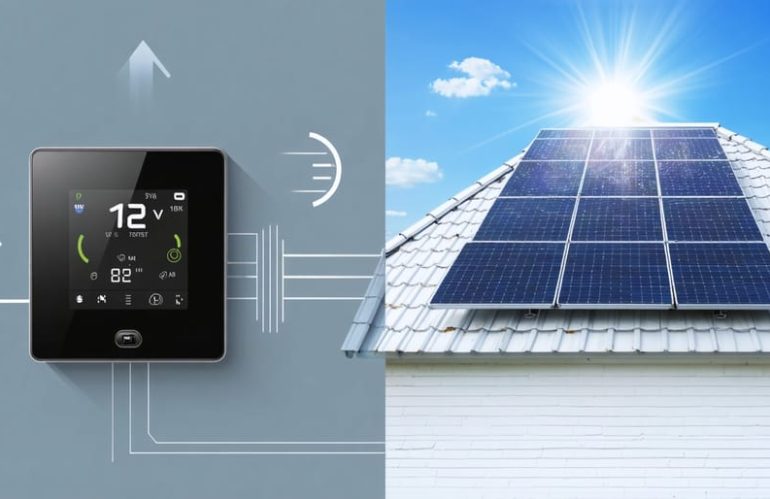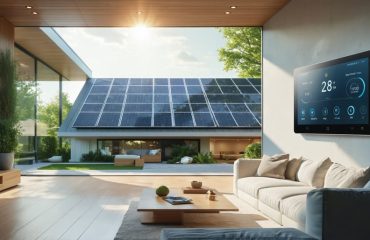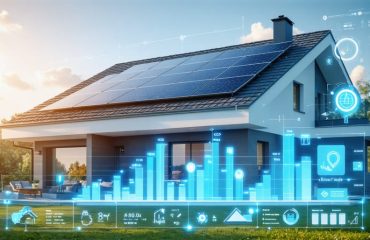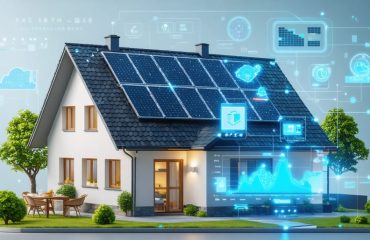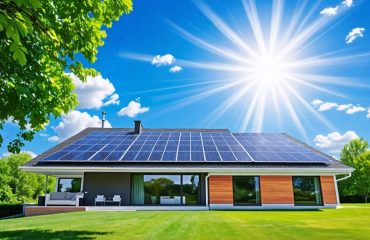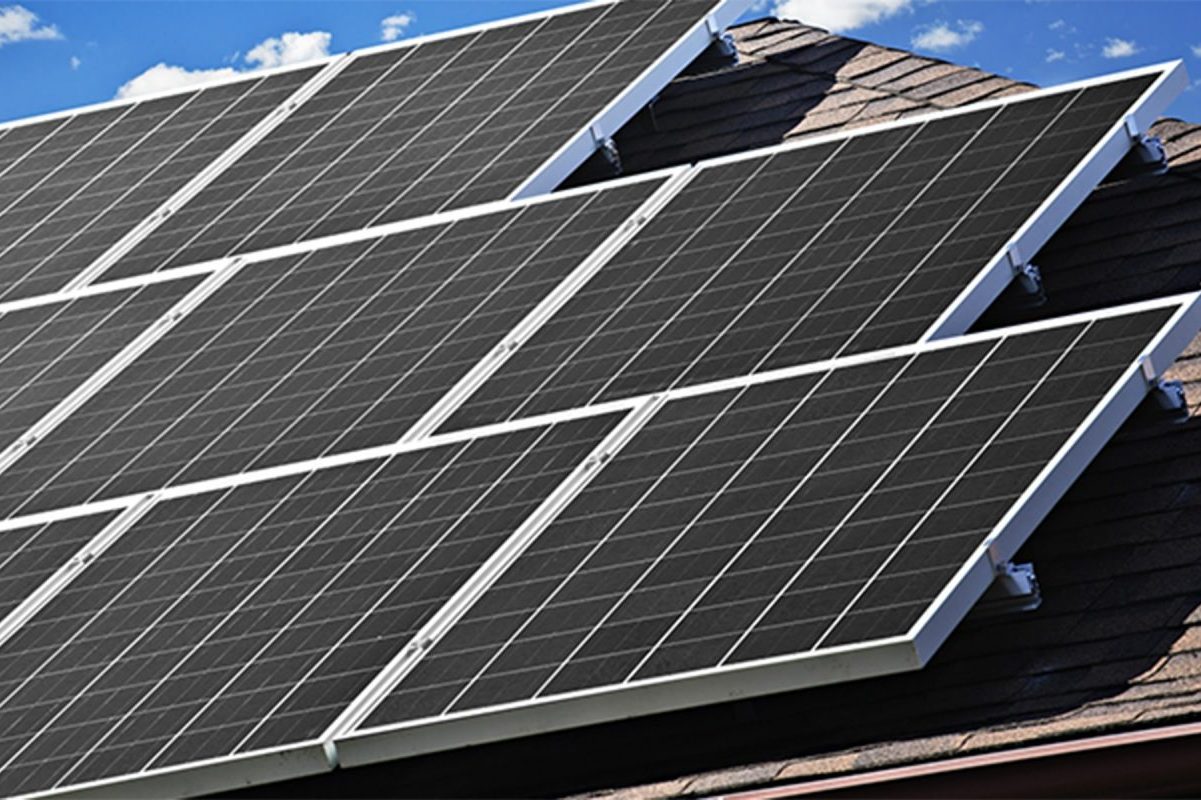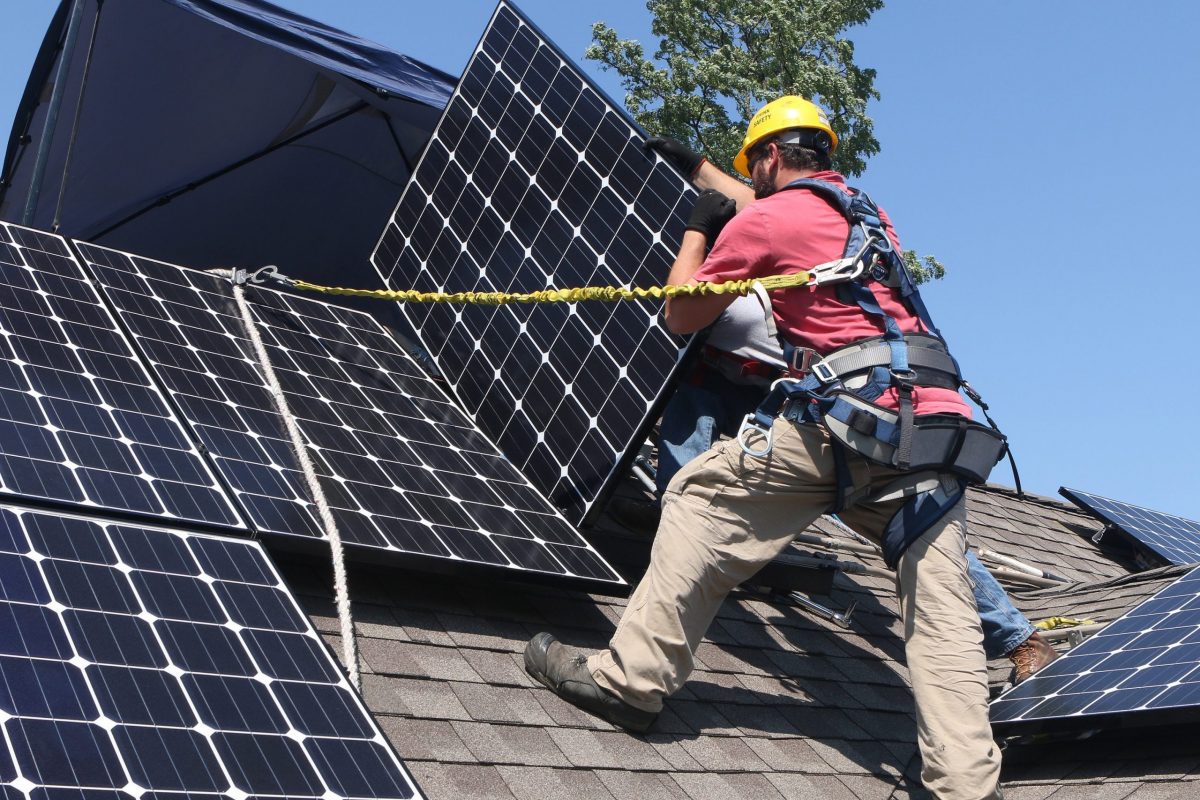Transform your solar-powered home into an energy-efficient haven with a 12V smart thermostat – the intelligent bridge between your solar system and climate control. Through advanced smart thermostat integration, these low-voltage devices automatically adjust your home’s temperature based on solar production, weather patterns, and your daily routine. Unlike traditional 24V thermostats, 12V models connect directly to your solar power system, eliminating the need for additional power converters while maintaining precise temperature control.
Modern 12V smart thermostats offer remote monitoring through smartphone apps, intelligent scheduling that maximizes solar energy usage, and real-time energy consumption data – all while operating on the same voltage as your solar battery bank. This seamless compatibility means homeowners can optimize their HVAC systems to run primarily during peak solar production hours, significantly reducing grid dependency and energy costs.
By integrating weather forecasts, occupancy detection, and solar production data, these smart devices ensure your home stays comfortable while prioritizing renewable energy use. The result? A more efficient, sustainable home that leverages your solar investment to its fullest potential.
Why 12V Smart Thermostats Are Perfect for Solar Installations
Direct Power Compatibility
One of the most attractive features of 12V smart thermostats is their perfect compatibility with solar power systems. Since most solar battery banks operate at 12 volts DC, these thermostats can connect directly to your solar setup without requiring additional power converters or complex wiring. This direct compatibility not only simplifies installation but also increases overall system efficiency by eliminating power conversion losses.
For homeowners with off-grid or hybrid solar systems, 12V thermostats offer significant advantages. They draw minimal power from your battery bank, typically consuming less than 2 watts during operation. This low power consumption helps preserve your stored solar energy, especially during nighttime or cloudy periods when solar production is limited.
The direct power connection also means greater reliability during power outages. Unlike conventional 24V or mains-powered thermostats, 12V models continue functioning as long as your solar battery system has charge, ensuring consistent climate control even when the grid goes down. This seamless integration makes 12V smart thermostats an ideal choice for solar-powered homes focused on energy independence and efficiency.
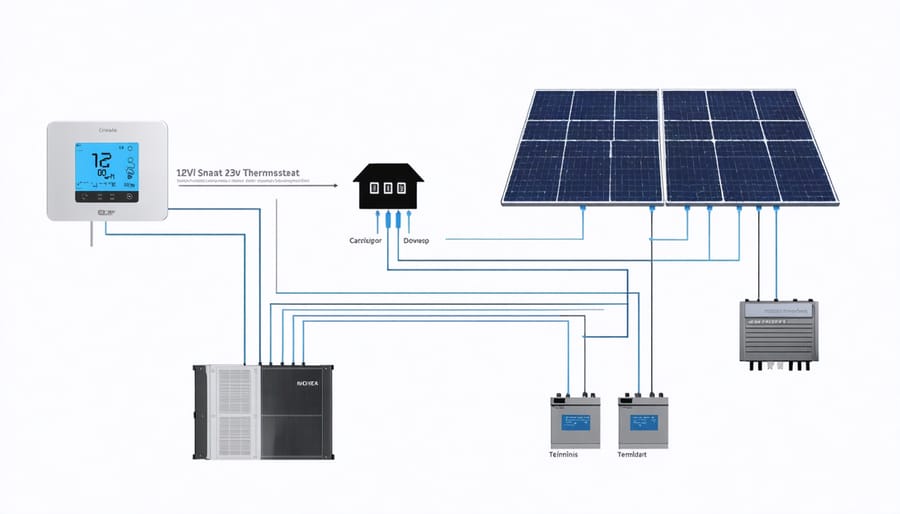
Energy Efficiency Benefits
A 12V smart thermostat offers significant energy-saving advantages over traditional thermostats, making it an excellent choice for environmentally conscious homeowners. By operating on a lower voltage system, these thermostats consume substantially less power while maintaining optimal temperature control. The smart features allow for precise temperature management, reducing unnecessary heating and cooling cycles that waste energy.
Most 12V smart thermostats include advanced scheduling capabilities and learning algorithms that adapt to your daily routines. This intelligent operation can lead to energy savings of up to 23% on heating and cooling costs compared to standard thermostats. The lower voltage requirement also makes them perfectly compatible with solar power systems, allowing you to maximize the use of clean energy in your home.
Remote monitoring and control through smartphone apps enable real-time adjustments to prevent energy waste when you’re away. The system’s ability to integrate with other smart home devices further enhances its efficiency, automatically adjusting temperatures based on occupancy, time of day, and even local weather conditions. This coordinated approach to climate control ensures you’re only using energy when and where it’s needed most.
Smart Features That Maximize Solar Power Usage
Peak Solar Production Integration
A 12V smart thermostat can revolutionize how your home utilizes solar energy through advanced intelligent energy management. These devices are specifically designed to sync with your solar production schedule, automatically adjusting your home’s temperature settings to maximize energy usage during peak solar hours.
When the sun is at its strongest, typically between 10 AM and 2 PM, your solar panels generate their maximum output. Your smart thermostat can be programmed to pre-cool your home during these peak production hours, storing the cool air for later use when solar generation decreases. This strategy, often called “solar load shifting,” helps you make the most of your solar investment.
The thermostat can also learn your household’s patterns and adjust accordingly. For example, if it knows you return home from work at 5 PM when solar production is declining, it will ensure your home is comfortable by utilizing stored cooling from peak production hours. This proactive approach reduces the need to draw power from the grid during expensive evening hours.
Many 12V smart thermostats now feature weather-tracking capabilities, allowing them to anticipate sunny days and adjust their cooling or heating schedule accordingly. Some models even integrate with solar monitoring systems to track real-time solar production and automatically optimize your HVAC usage based on available solar power.
By aligning your home’s energy consumption with peak solar production, you’ll maximize self-consumption of your solar energy and minimize reliance on grid power, leading to greater energy independence and lower utility bills.
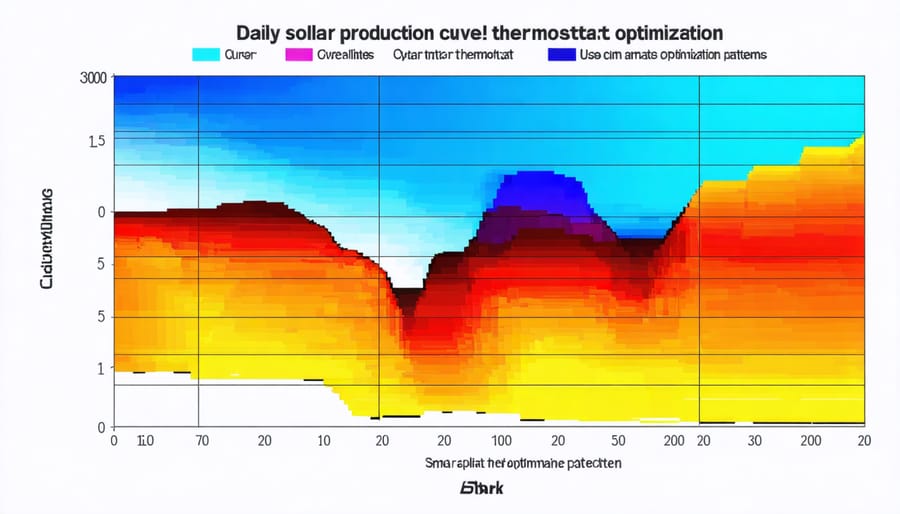
Battery Storage Optimization
A key advantage of 12V smart thermostats is their intelligent battery management system, which works seamlessly with your solar battery storage setup. These devices continuously monitor your battery levels and automatically adjust their energy consumption to maximize efficiency.
During periods of low battery charge, the thermostat enters power-saving mode, implementing strategic temperature adjustments that maintain comfort while reducing energy draw. This smart feature ensures your heating and cooling systems won’t unnecessarily drain your batteries when power reserves are limited.
The thermostat’s adaptive learning algorithm creates an optimal schedule based on your typical energy usage patterns and available battery capacity. It can automatically reduce HVAC intensity during peak usage hours or when battery levels drop below preset thresholds, helping extend your stored energy’s lifespan.
Many models include user-friendly mobile apps that provide real-time insights into battery levels and energy consumption. You can set custom triggers for different battery scenarios, such as switching to eco mode when storage capacity falls below 30% or maximizing comfort when batteries are fully charged.
These optimization features are particularly valuable during extended cloudy periods or nighttime hours when solar generation is minimal. By intelligently managing your HVAC system’s power consumption, the smart thermostat helps ensure you have sufficient battery reserves for essential needs while maintaining comfortable indoor temperatures throughout the day.
Installation and Setup Made Simple
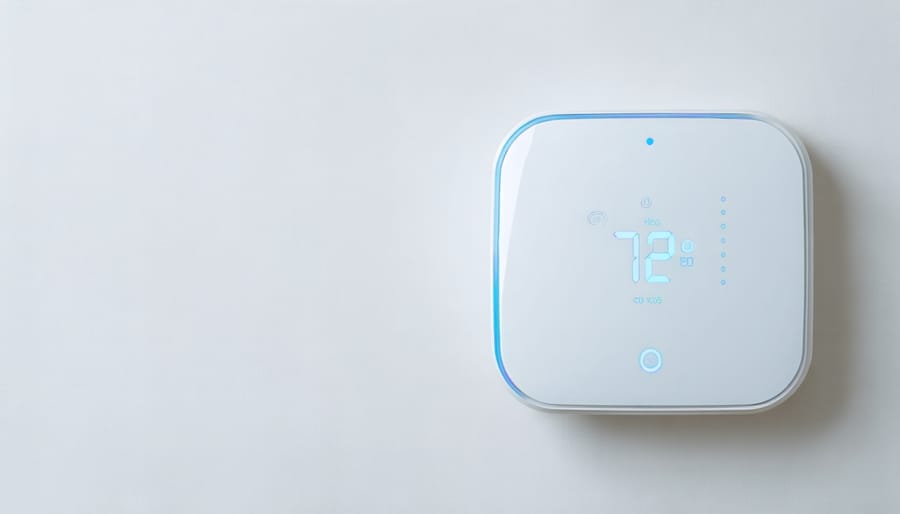
Wiring and Connection Basics
Installing a 12V smart thermostat is simpler than you might think. Most models come with clear instructions and require just a few basic connections. You’ll need to connect your thermostat to both power and your HVAC equipment using low-voltage wiring.
Start by turning off power to your HVAC system at the circuit breaker for safety. Your new smart thermostat will typically have labeled terminals for different connections: R (power), C (common wire), W (heat), Y (cooling), and G (fan). Many 12V thermostats are designed to work with existing wiring from your old thermostat, making the swap straightforward.
If you’re connecting to a solar system, you’ll need to ensure your thermostat is compatible with your power setup. Most 12V smart thermostats can work with both battery power and direct DC power from solar systems. Some models include a backup battery option for added reliability.
For the best performance, use appropriate gauge wiring (usually 18-22 AWG) and ensure all connections are secure. If you’re unsure about any step of the installation process, it’s always best to consult with a qualified electrician. They can verify your wiring setup and ensure everything is connected safely and correctly.
Remember to test all functions after installation, including heating, cooling, and any smart features you’ve enabled.
Programming Your System
Getting your 12V smart thermostat up and running is simpler than you might think. Start by selecting your preferred temperature range for different times of the day. Most models allow you to set four distinct periods: wake-up, daytime, evening, and nighttime. Consider setting the temperature 2-3 degrees higher during peak sunlight hours to maximize your solar energy usage.
Next, connect your thermostat to your home’s Wi-Fi network through the manufacturer’s mobile app. This enables remote control and monitoring capabilities, letting you adjust settings from anywhere. Take time to explore the energy-saving features, such as occupancy detection and weather-based adjustments, which help optimize your system’s performance.
For optimal efficiency, program your thermostat to pre-cool or pre-heat your home before peak energy demand periods. This strategy, known as “thermal banking,” helps reduce strain on your solar system when energy production might be lower. Many smart thermostats also offer learning capabilities – they’ll analyze your patterns and automatically adjust to your preferences over time.
Don’t forget to set up alerts for maintenance reminders and extreme temperature notifications. These features help protect your system and ensure consistent performance. Most importantly, review and adjust your settings seasonally to account for changing weather patterns and daylight hours, ensuring your system remains efficient year-round.
Real Cost Savings and ROI
Energy Bill Impact
Installing a 12V smart thermostat can lead to significant energy savings, with many homeowners reporting a 10-15% reduction in their annual heating and cooling costs. For the average household spending $2,000 yearly on climate control, this translates to $200-300 in savings.
The smart scheduling features alone can reduce energy usage by automatically adjusting temperatures during peak and off-peak hours. For example, programming your thermostat to raise the temperature by 7-10 degrees while you’re at work during summer months can cut cooling costs by up to 10%.
Real-world data shows that homes using smart thermostats with solar systems achieve even greater savings. By synchronizing operation with peak solar production hours, these systems can reduce grid electricity consumption by an additional 20-30%. A typical 4-person household can save approximately $450-600 annually when combining solar power with smart temperature management.
The learning capabilities of these devices further enhance savings by adapting to your daily routines. Over time, the thermostat creates an efficient heating and cooling schedule based on your preferences and habits. Users report that this smart optimization can add another 5-8% in energy savings compared to standard programmed schedules.
Monthly energy monitoring through the device’s app helps homeowners track their savings and make informed decisions about their energy usage patterns, leading to more conscious consumption and additional cost reductions.
Long-term Value Benefits
Investing in a 12V smart thermostat delivers lasting benefits that extend well beyond immediate energy savings. These innovative devices are built to withstand years of continuous operation, typically lasting 10-15 years with proper maintenance. Their durability is particularly noteworthy in solar-powered homes, where consistent performance is crucial to maximize energy storage ROI.
Smart thermostats contribute significantly to your home’s market value, with real estate experts noting that homes equipped with smart climate control systems often command higher resale prices. This increased value stems from the growing demand for energy-efficient homes and the appeal of integrated smart home technology to potential buyers.
The long-term value proposition extends to reduced maintenance costs, as these systems provide early warning signs of HVAC issues before they become major problems. Their self-diagnostic capabilities and regular performance reports help prevent costly repairs and extend the life of your heating and cooling equipment.
Additionally, many smart thermostat manufacturers regularly release software updates, ensuring your device stays current with the latest energy-saving features and security protocols. This ongoing support means your investment continues to improve over time, adapting to new technologies and maintaining optimal performance throughout its lifespan.
The transition to a 12V smart thermostat represents a significant step toward more efficient, sustainable home climate control. By integrating this innovative technology into your home, you’re not just making a smart choice for your comfort – you’re investing in a future of reduced energy consumption and lower utility bills. These devices offer unprecedented control over your heating and cooling systems while working seamlessly with solar power setups, making them an ideal choice for environmentally conscious homeowners.
The benefits are clear: improved energy efficiency, remote accessibility, detailed energy consumption insights, and compatibility with renewable energy systems. Whether you’re already running a solar-powered home or planning to make the switch in the future, a 12V smart thermostat provides the perfect foundation for a more sustainable living space.
Don’t wait to start saving energy and money. By making the switch to a 12V smart thermostat today, you’ll be joining countless other homeowners who have already discovered the advantages of intelligent climate control. The installation process is straightforward, the learning curve is gentle, and the positive impact on both your wallet and the environment is immediate.
Take the first step toward a more efficient home environment. With a 12V smart thermostat, you’re not just controlling your home’s temperature – you’re embracing the future of sustainable living.

